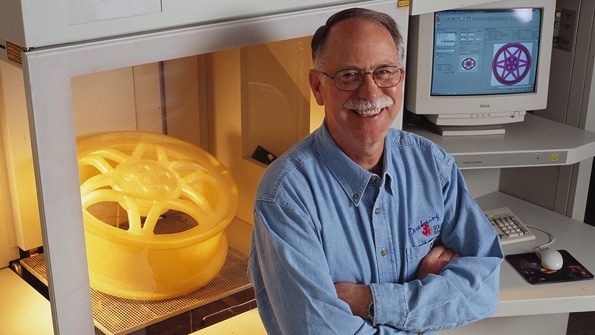What is 3D printing? Get to know the world of layers!
Here you'll learn clearly what 3D printing is, what makes a 3D printer, and which personalities play(ed) a role in the development of this technology.
Have fun discovering!
What is 3D printing?
In the literature, 3D printing is counted among the original forming manufacturing processes. This means that a solid body with a geometrically defined shape is produced from a shapeless material. 3D printing creates physical objects from digital files. This “digital base” can be generated in several ways:
- CAD modeling
- Data from 3D scanners
- 3D modeling
The data created in this way cannot be read by the 3D printer and 3D printed. This requires software that “translates” the geometric shape into the machine language of the 3D printer (into what is known as G-code). This software is called Slicer. A slicer like Ultimaker's Cura first cuts a 3D object into individual 2D slices. It then calculates the travel path of the 3D print head based on predefined settings. Subsequently, 3D printing produces a solid body by applying material layer by layer from the digital file. That's why it's also called additive manufacturing – something is added in this process. The principle of application is different depending on the technology used.

How is a 3D printer constructed?
3D printers differ from each other not only by their technology. Even within one technology there are different construction methods. In principle, however, they are all similar. The following shows the setup of a fused deposition modeling (FDM) 3D printer with two nozzles (nozzles).
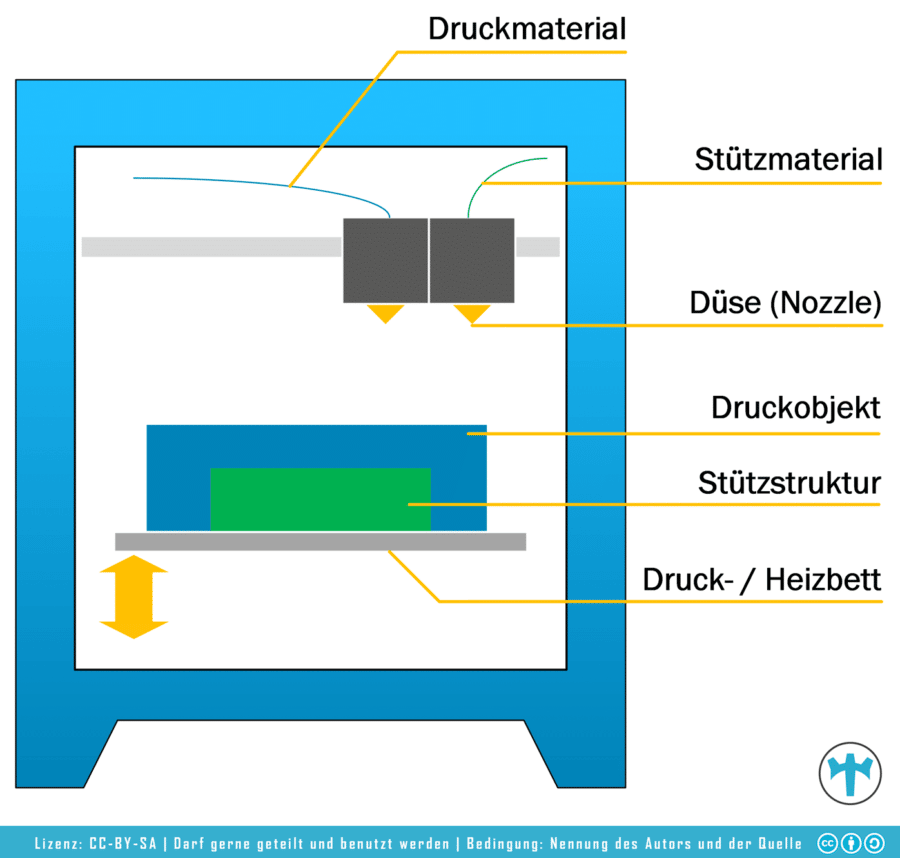
How does a 3D printer work?
In the case of the 3D printer shown above, the steps are as follows:
- Heating up the heating bed and the nozzle or nozzles
- The print or heating bed moves up to the printhead
- Molten filament is applied to the heating bed until the first layer is completed
- The heating bed then travels down a path of one layer height (Measured in microns)
- The next filament layer is applied to the previous one and fused with it
- In places with an overhang, either a support structure made of the same material or – as in the illustration – of a different material can be used. Ideally, this material can be dissolved in water or other solution (see PVA filament and HIPS filament).
- Repeat the last step until the print object is completed
Who is the inventor of 3D printing?
The first precursors of 3D printing and 3D scanning already existed in the 19th century. In 1859, the French sculptor and photographer François Willème invented a device that enabled him to create a 3D model using several cameras. Based on this, he can then make copies of the “scanned” object in different sizes.
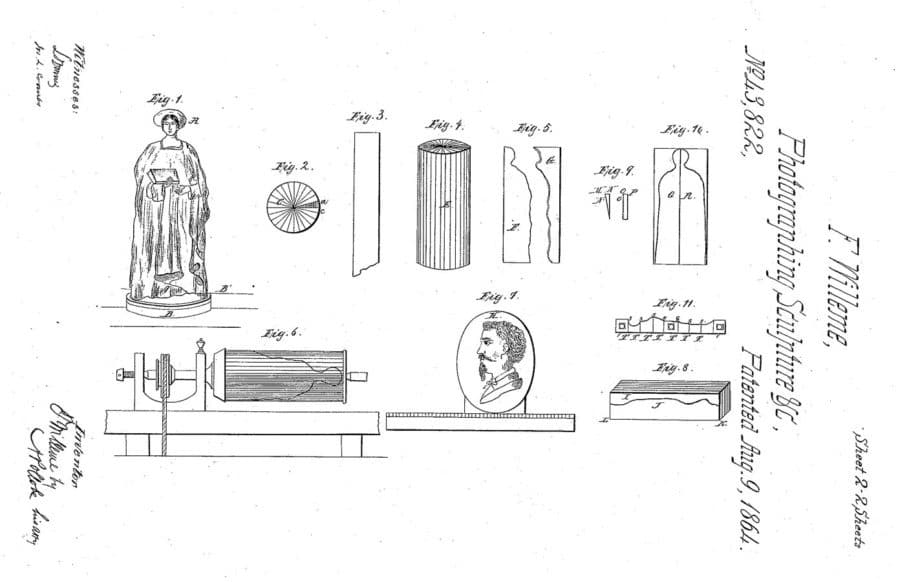
In 1892, the Austrian Joseph E. Blanther applied for a patent for the production of relief maps. For this purpose, wax plates are first laminated. Then cut out the desired shape from the wax plates and glue them together. This creates a 3D map layer by layer.
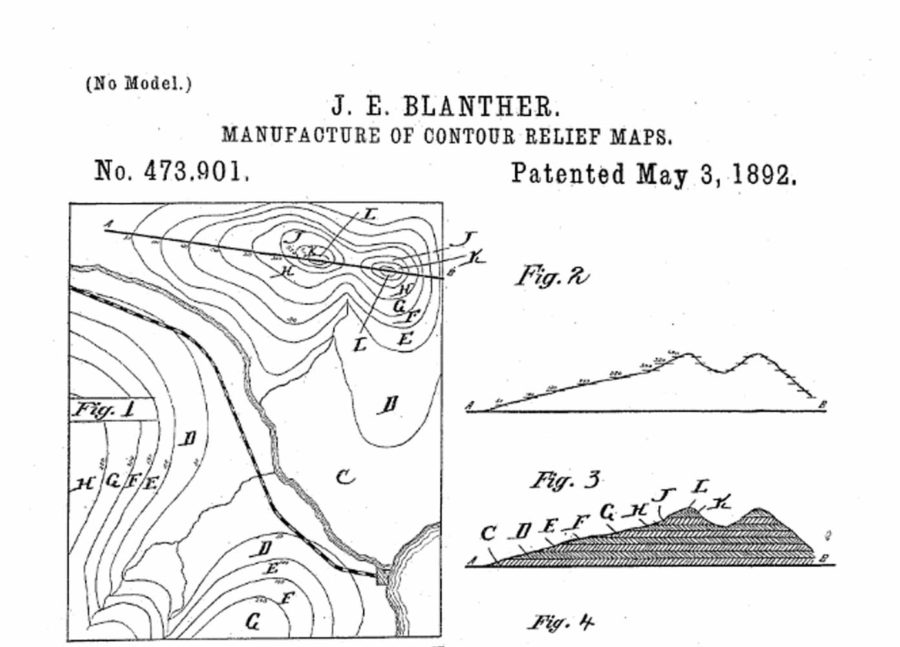
It's not really possible to speak of an inventor when it comes to 3D printing. Many ideas are based on old developments and finally only the names of the inventors are in the public eye who could celebrate commercial success with their products. threedom would like to mention all the names, however, because each deserves its place in our story.
More Information: 3D Printing History & Development
Hideo Kodama (SLA)
In 1980, Japanese inventor Hideo Kodama filed a patent describing how a photopolymer material cures using UV light to create a model layer by layer. This is also the principle of stereolithography. Lack of financial means lead to his inability to pay for the further steps of the patent application, as a result of which he is known to only a few people in the scene today.
Alain le Méhauté, Olivier de Witte and Jean-Claude André (SLA)
In 1984, three French scientists, Alain le Méhauté, Olivier de Witte and Jean-Claude André, filed a patent for a process in which liquid is hardened with the aid of a light source three weeks before the US American Chuck Hull. The three call this process stereolithography. The first print object of the three inventors is a spiral staircase. The research institute through which they apply for the patent does not recognize the potential of their invention and stops funding the project to develop a marketable device.
Chuck W. Hull (SLA)
The US American Chuck W. Hull also applied for a similar patent in 1984. He previously investigated the behavior of photopolymers under UV light and found the best combination between light intensity, irradiation time as well as photopolymer in long series of experiments. In 1986, based on his patent, he founded 3D Systems, a company that is still well-known and active today.
Carl R. Deckard (SLS)
Carl S. Deckard is a student at the University of Texas when he gets the idea of being able to make objects without molds. The university recognizes the market potential and supports it. This allows him to work on optimizing the technology during his studies and subsequent dissertation. He applied for a patent for selective laser sintering (SLS) in 1987. The University of Texas has made good revenue for decades by licensing the process to other companies.
Steven Scott Crump (FDM)
Actually, Steven Scott Crump just wants to make a toy frog for his daughter, and in doing so he tests a material he mixed himself from wax and plastic in a hot glue gun. These experiments lead him to link the hot glue gun to an apparatus that has XYZ axes. So from now on he can make more beautiful frogs than by hand. In 1989, he registered the patent for fused deposition modeling (FDM) and in 1992 launched the first fully functional FDM printer. He and his wife Lisa founded the Stratasys company, on whose board of directors he still sits today.
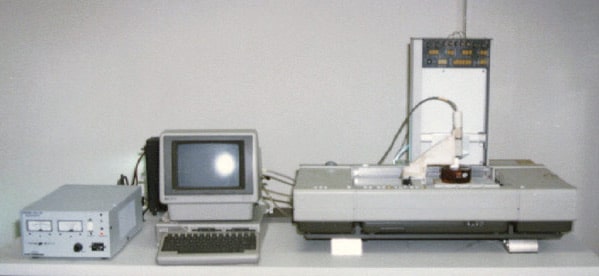
What 3D printing processes are available?
In order not to infringe patents of other companies, many companies have developed new 3D printing processes over time. These processes allow certain modes of operation or are only suitable for certain purposes as well as materials.
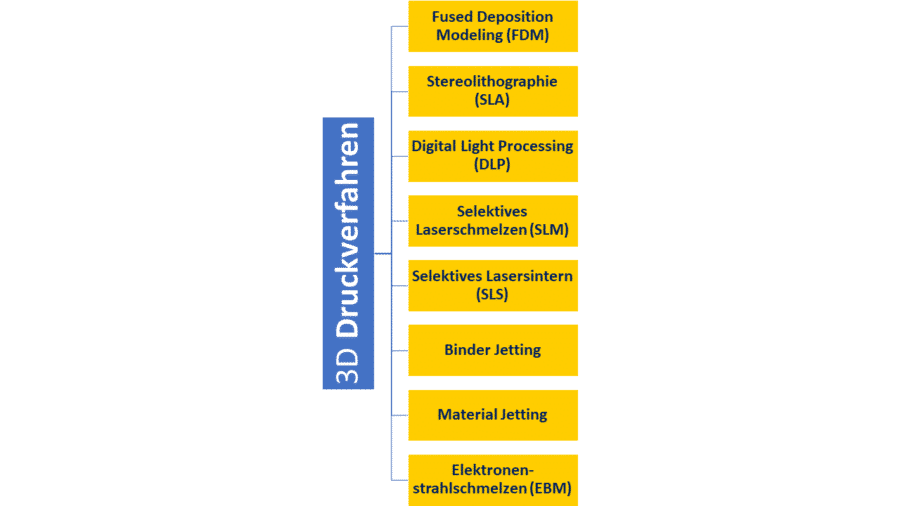
Fused Deposition Modeling (FDM)
In Fused Deposition Modeling (FDM), plastic in wire form (called filament) is melted in the hot end of the 3D printer and deposited onto the print bed in layers. In this way, the desired 3D printed object is created additively.
Stereolithography (SLA)
In stereolithography (SLA), liquid resin (also called resin) in a container serves as the starting material. The resin is illuminated with the help of a laser and hardens at these points.
Digital Light Processing (DLP)
Digital Light Processing (DLP) uses light to cure liquid resin. In contrast to the SLA method (light source=laser), DLP uses a projector or LCD display as the light source.
Selective laser melting (SLM)
In selective laser melting (SLM), the starting material is metal powder. This powder is melted with a powerful laser and creates the desired 3D printed object.
Selective laser sintering (SLS)
In principle, selective laser sintering (SLS) differs little from laser melting. However, a heat source is used that heats the interior of the SLS printer along with the material and build space. A laser is then used to melt plastic powder layer by layer to create the 3D printed object.
Binder Jetting
In binder jetting, the powdered starting material is bonded in the build space with the aid of an adhesive – the binder. In this way, the desired object is created layer by layer.
Material Jetting
In material jetting, photopolymers serve as the starting material. The material is heated and fed into the print head. This works in a similar way to an office or home inkjet printer. The heated material is atomized into fine droplets and applied in layers.
Electron beam melting (EBM)
Electron beam melting (EBM) requires conductive material in powder form as the starting material. This metal powder is bombarded with a high-energy beam of electrons and melted. Each previous layer melts together with the new one, creating a solid body.
What materials can be printed with a 3D printer?
In 3D printing, the choice of material also depends on the 3D printing process used. While some can print a wide range of materials, other processes are severely compromised. There are also 3D printers – similar to inkjet and laser printers available today – that can only process the material of the respective manufacturer. In most cases, 3D printing is also implemented with a chip. On this, for example, the material type and the quantity of the material is stored.
We already describe many materials with their advantages and disadvantages, and also with various tips on printer settings. Furthermore, we show you how the described material is used in 3D printing (and in everyday life without 3D printing).
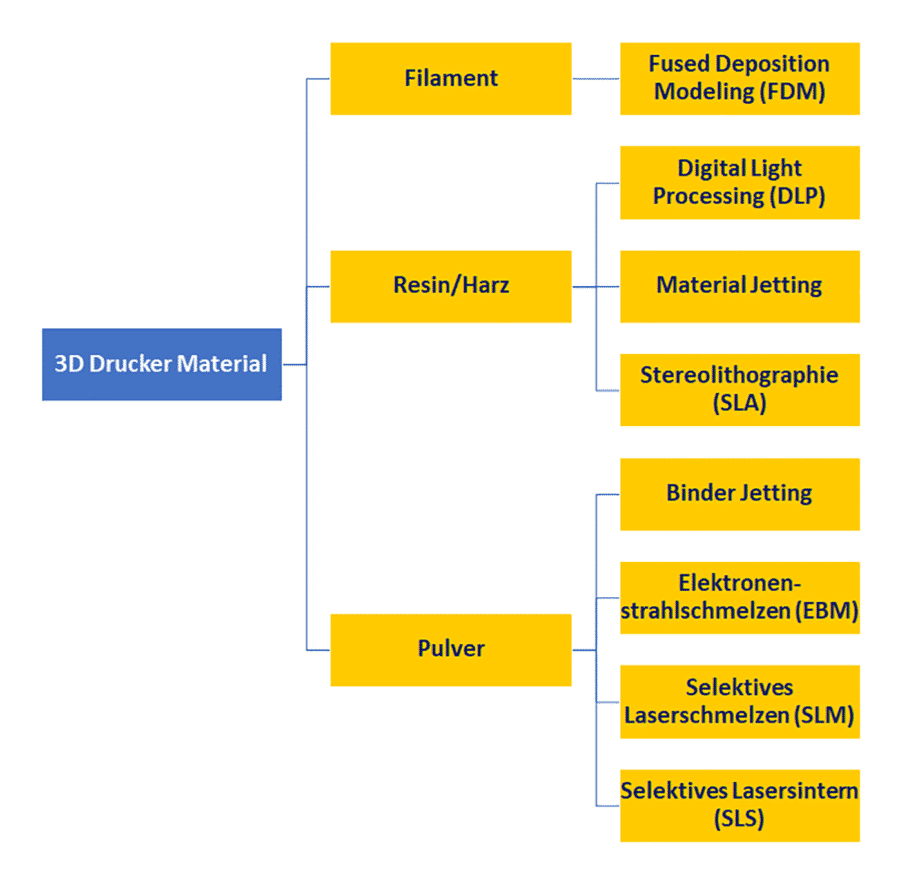
3D printing advantages
- Less waste
- No tooling costs
- High process speed
- Individual products – “batch size 1
- Complex designs
The advantages and disadvantages of 3D printing can be found in detail in the article 3D Printing: Advantages and Disadvantages.
Disadvantages of 3D printing
- High costs for large quantities
- Limited choice of materials and colors
- Accuracy
- Limited stability
3D printing fields of application
A short answer to the question “where is 3D printing used” would be “almost everywhere”. But I don't want to make it that easy for myself.
Currently, 3D printers are used in the following areas or industries:
Architecture and 3D printing
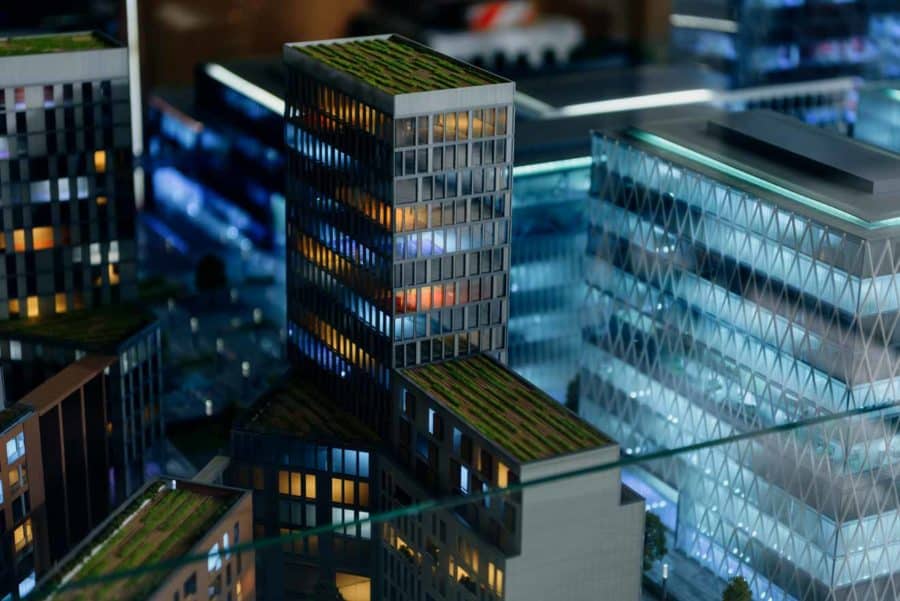
In the past, creating scale models in architecture was a lengthy process. Here times less paint or there times a wall less you can not imagine your customer of course and that is why such models were built to the smallest detail in painstaking manual labor. What happened if the customer still wanted changes? We don't even want to imagine that now. Today, both large architectural firms and independent architects can quickly and easily create models using 3D printing. For this, you only need the CAD data and can also produce new models faster than with the traditional method when changes are made. Depending on the 3D printing process, it is also possible to communicate various facade colors, etc.
Additive manufacturing in the automotive industry
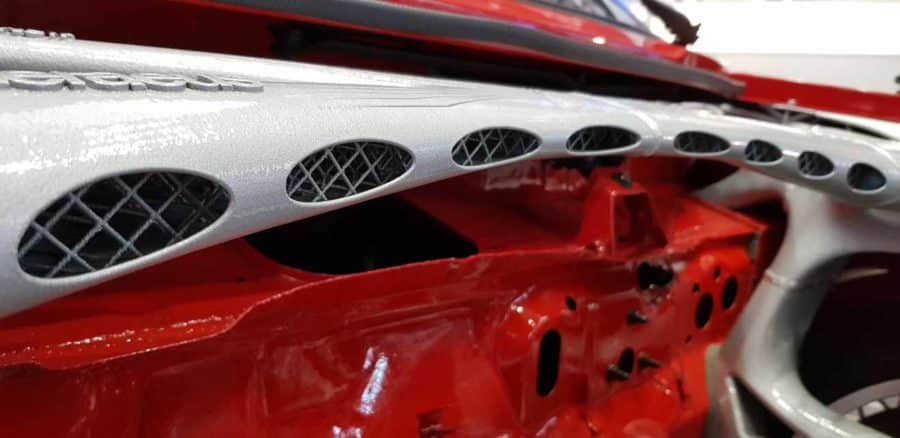
While other industries are just learning about 3D printing, the automotive industry is one of the “early adopters” of this technology. For example, prototypes and prefabricated parts were used in motor sports relatively early on. Today, components are made from several individual parts using 3D printing in order to save weight and ultimately reduce fuel costs. The German car manufacturer Porsche also uses 3D printing to produce spare parts for classic cars. As a result, they reduce their inventory costs and produce only on demand.
Further info: Porsche Classic Program
Use of 3D printing in aerospace applications

Like the automotive industry, aerospace companies have been early adopters of 3D printing in the production of prototypes and finished parts. My favorite space company, Elon Musk's SpaceX, has used 3D printing to create the engine chambers for the SuperDraco engine. The SuperDraco will be installed on the Dragon spacecraft. This decision drastically shortened the lead time. The engine compartments were printed from Inconel, a high-performance superalloy, and have already proven themselves several times in tests.
Medicine & 3D Printing – A Dream Team?!
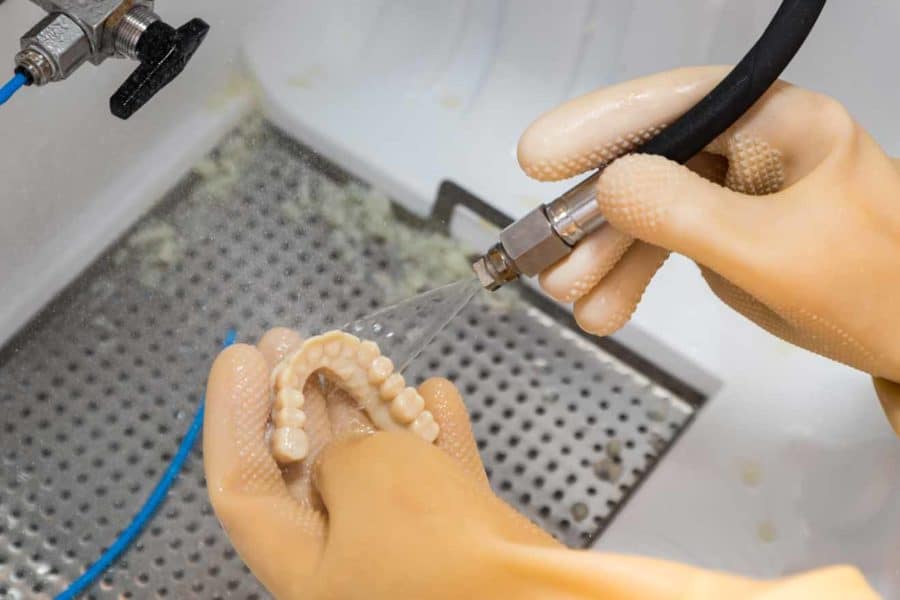
Hardly any other field benefits as much from 3D printing as medicine. This field is huge and that is why the possibilities are almost endless.
One potential area of medicine accelerated by 3D printing is dental technology. For example, splints or drilling templates can now be produced with 3D printers. Drilling templates are used for implants. It is important there that the angle at which the drill is inserted is perfectly set. If a 3D image of the jaw is created, the template can be designed to match it. The dentist then “only” has to operate the drill. Furthermore, the technology has gone so far that crowns can now also be produced with it. Hearing aids should also be mentioned, which are becoming smaller and more powerful. These have also been the result of 3D printing for a long time. Adapted to the respective ear, not only custom-fit hearing aids are possible, but also in all possible colors. Especially for children, this can increase acceptance if they have hearing aids in their favorite color.
Product design with additive manufacturing
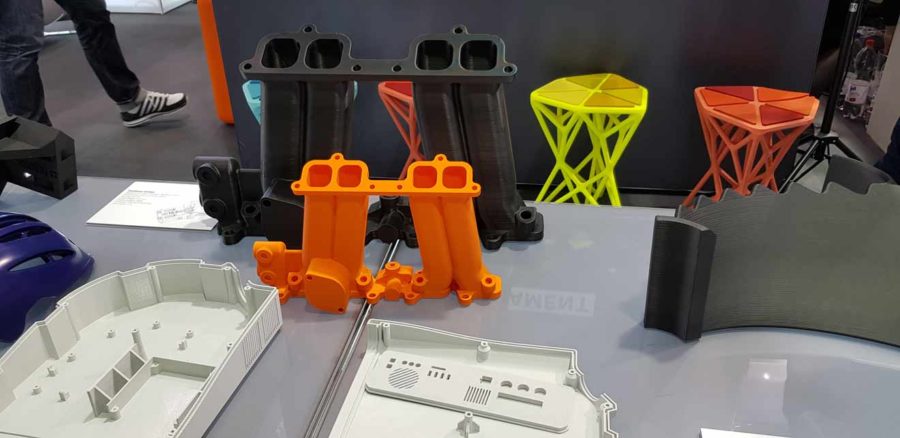
Product designers use 3D printing to print test products that they then show to a test group of potential customers. For example, a manufacturer of ceramic baths uses BigRep to create multiple design variations of a tub. These are then shown to different groups. The most popular variants continue to come and so a design can be optimized and adapted to the needs of the target audience without the use of expensive tools.
3D Printing in Mechanical Engineering – How are 3D printers used there?
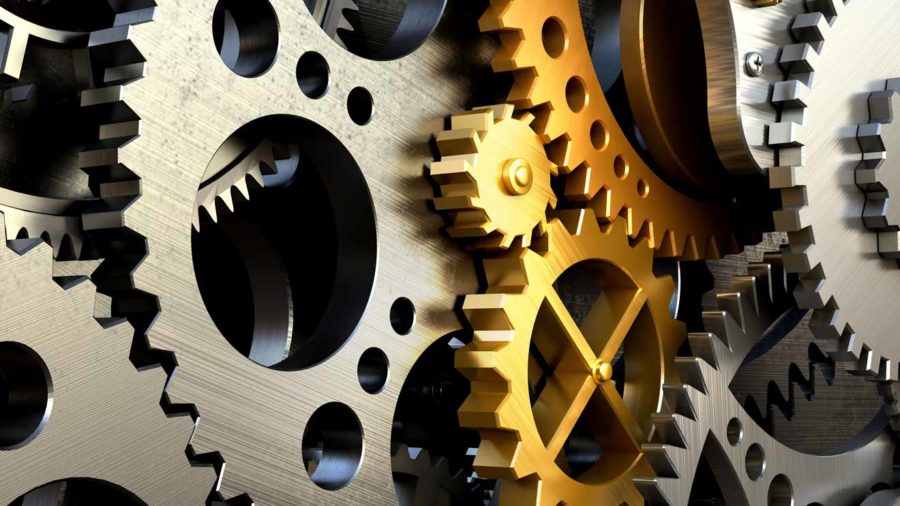
3D printing reduces costs. As with product design, engineers can design and 3D print different solutions to a problem. By providing haptic feedback and also viewing the motion of mechanical parts, many problems can be identified and eliminated well before the final products are produced.
Model making – A dream come true
Modelers may have rejoiced at the invention of 3D printing, or better yet, affordable 3D printer kits . There is currently no other technology that allows people to live out their own creativity like 3D printing. The 3D printer templates can be exchanged and also edited via the Internet. Today, not only “accessories” for model making are printed, such as traffic lights, bridges and ramps. Daniel Norée, for example, launched the Open R/C project in 2013 and created this Formula 1 car as part of it. The data is available to everyone free of charge. ➡ To Daniel's homepage Further information from threedom: ➡ 3D Printing Applications
What's next for 3D printing?
An estimated 300,000 3D printers are sold annually in the end-user market. Anyone who follows the market a bit knows that this number is steadily increasing. 3D Hubs expects this number to double per year. That's quite an announcement. To go through the jungle of different types of 3D printers, blogs like mine are there.
